SCOPE
No, this isn’t a James Bond thriller.
Perhaps it should be.
-
This story is about the third report out of an obscure committee going by the name of -
‘Scientific Committee on Problems of the Environment’
I have spent a lot of time investigating what led up to 2020, with a particular emphasis on One Health, which in turn is primarily about vaccines and surveillance.
I then tracked the latter through to global surveillance, the Department of Defense’s GEIS, and a 1996 press release by Bill Clinton.
I tracked the developing world surveillance apparatus construction taking place under PEPFAR, and I discovered how Rockefeller and NTI launched the CORDS Network initiative.
I’ve seen how the initiative besides public health grew to include animal health, antimicrobial resistance, food, water, and as of late, even comprise all matters of the environment, oceans, toxins, chemicals, and the ecosystem and biodiversity in general.
All of which should be monitored.
But I did not expect to see it all, clearly laid out in a single document. And much less so in one released in 1973, and commissioned by the United Nations.
-
To be clear, this report is their third. Their first was released in 1971, also on the topic of surveillance, specifically titled the -
‘Global Environmental Monitoring System’. GEMS.
Now, I know the preface above state ‘a few priority pollutants’, but that’s somewhat selling this short, clearly proven through their content section below.
We find the atmosphere, oceans, river, lakes, ground water, soils, chemicals, vegetation, forests, food, drinking water… and in chapter 12, we further see epidemiological monitoring, animals and birds, emissions, and even sociological and economic monitoring - which later came to be known as the ‘Determinants of Health’.
And in that regard - this document really is from 1973. In fact, here’s their early repertoire.
And just to clarify, this really isn’t a joke. They even have their own page on wikipedia, although I’m unsure if Wikipedia is one. And there’s one thing of interest in this regard, because SCOPE was founded through the Committee of the International Council for Science, which is expressly listed as the parent organisation.
Well, just a few years ago, the ICSU merged with the ISSC to form the International Science Council, which SCOPE then joined in 2019. Perhaps I overthink things on occasion, but to me it’s an interesting development, because that process essentially orphaned SCOPE. And, through my discoveries, that’s typically a great spot to hide true calamities, because they already have an established - though on this occasion slightly obscure - record.
Before we dive into the third report, perhaps we ought to have a quick peek in the first. Because there are several factors of importance in this - early - version, from which the contents section can be seen below. By and large the same factors are included - atmosphere, water, soil, organisms, and biological systems are potential variables.
The next pages of importance outlines the background, general structure of the organisation (junior to ICSU), membership (which includes the ideological opponents based in the Soviet Union), disciplines (including social sciences), scope (human activity, population, natural resource use, and population).
And it also details how this report came to be through a request from the Secretary-General of the UN Conference on the Human Environment in Stockholm, 1972.
In case you don’t know who that is, it really is very simple. It’s Maurice Strong. Yes, really - of all people, THE Maurice Strong instigated this report.
Awake yet?
And though I could now go through this report in detail, because it really does outline expressly what’s suggested, I’d rather spend my time on the third report as it arrived after the Stockholm conference - and consequently, will be an updated, polished version, inclusive of factors considered of importance by the UN bureaucrats.
I will however quickly go through the section on operational and institutional arrangements. Basically, their recommendations on what should be created, who should be in charge, and… how it should be rolled out.
The suggestion is for a centrally coordinated unit to be created, for nations to subscribe, submit standardised data, for a centrally administered fund to help when local finances are inadequate, for methods of data dissemination to exist (make a note of that), to include satellite data, and samples of air, water, soils, and biota from all over the world.
And finally, all data must be treated as a unity. The holistic view, eh?
I mean, when you think about this report being penned in 1971, it’s not only incredibly thought through, organised, coherent and structured. But it’s also exceptionally relevant.
And it was penned more than 50 years ago.
In the introduction we learn about the monitoring mechanism being accepted at Stockholm, and named GEMS - the ‘Global Environment Monitoring System’). We learn that observation intervals are arbitrary, that assessment - the interpretation of data - is to be used for quality control, examination of the efficiency of the network itself, the (imperfect) observation of the state of the environment, and - importantly - prediction of future states.
Data included for first-pass monitoring includes priority pollutants, and the media in which they may be monitored, but proposals are to be made for other kinds of environmental indicators relating to health and biological systems, food, natural resources, emissions, and socio-economic states. Hmm. Finally, methodologies for sampling are to be developed as well.
The objective is to ‘ensure the present and future protection of human health and safety and the wise management of the environment and its resources’, and this is to be carried out by increasing our knowledge on changes to the environment and the maintenance thereof, by providing ‘early warning of significant environmental changes’, and making it possible to check up on effectiveness of regulation.
The Principles of Monitoring state that this needs to be built on currently existing systems and UN specialised agencies, that priority should be given to global issues, exchange of information is of high importance, that special emphasis should be given to variables of critical importance, objectives must be clearly defined, nations must cooperate on international territories such as oceans and space, and that training programs are required and should be offered to implementing states, regardless of state of development.
And these principles were accepted by the 1972 conference in Stockholm.
Further can be added that the system should be switched on sooner rather than later, or data for long-term trends will be lost, sampling frequencies will ‘are likely to change’, and at this stage, feedback mechanisms in ecological systems have not yet been extensively studied.
The rest of the chapter is dedicated to the discussion of monitoring sites, difficulties in the creation of monitoring stations, and so forth. I will skip a few pages, because they’re not terribly interesting.
Time and Space Network Resolution discusses averaging sampling intervals, which in short are variable - from ‘a few days to a few minutes’, though I’m sure they didn’t decide to stop at just a few minutes. We also see the need for pilot studies, which must precede routine monitoring, and of which a number are already being planned (they didn’t waste much time).
Operational Principles outline comparable sampling techniques, periodic calibration, compatible databases, quality control, data standardisation and submission deadlines, instrument log books, remote sites, and the determination of signal variability and spatial correlation coefficients.
And finally, the systems approach section outlines the differences in types of media (diffusing vs concentrating), and all data should be linkable, as some effects - climate change listed as one - rely on multiple data streams, and further, because swapping pollution in one media for another isn’t a terribly good solution.
They thought of just about everything, and even finish off by stating that ‘some gaps are unavoidable’. Really is very impressively done.
It’s at this stage, the ‘few priority pollutants‘ are listed. In short, this is nothing short of a recommendation that air, water, soil, oceans, biota, food, even humans be monitored.
And that’s not really ‘a few’, is it? Still, makes a reassuring headline for those people insufficiently nosey to read through to page 31 of the document.
Chapters 6-11 detail the specifics of monitoring of the atmosphere, oceans, rivers, lakes, ground water, soils, vegetation, forests, and food and drinking water.
I won’t go into detail here. There’s nothing terribly surprising here; it’s specifics relating to the monitoring of those areas of interest. Besides, for the benefit of those few who’d read this anyway, the document is linked above, and here again.
The truly interesting information immediately follows.
If you at this stage still sit with some level of doubt that this document is of contemporary relevance, let me introduce you to Chapter 12.
All-Media Recommendations.
We kick off with inclusion of data on measures of radioactivity, and then escalate quite significantly as Epidemiological Monitoring arrives in 12.2.
In short, data relating to deaths should include not just time and place, but vastly expand this to sampling growth rates. Beyond, it’s somewhat hazy, as the author concedes that environmental factors are difficult to directly measure as impacts on the individual, and besides, differences in populations and their physical environments also differ. And then there’s the very gradual development of chronic disease. Oh yeah, and the socio-economic factors…
… is it me, ot does it smell an awful lot like the ‘Determinants of Health’ in here?
Recommendations are made, and beyond measuring growth weights and heights, they also consider the monitoring of indoor environments, commissioning epidemiological studies for ‘impact situations’, and finally - epidemic forecasting., on grounds of… an increase in international travel.
… and there’s the disease surveillance.
We carry on with the monitoring of animals, and specifically, birds. No recommendations are made here, but they do suggest monitoring species diversity, relative abundance, age structures of populations, reproductive rates, the state of sentitive species, and finally, the thickness of eggshells.
Damn, they thought of everything.
In 1973!
We then swiftly move on to emission monitoring, which boils down to measuring source strengths, that is, pollution from chimneys and water pipes.
And then comes the charmer - Sociological and Economic Monitoring. In short, this drags in diet, education, working conditions, housing, transportation, employment, clothing, recreation, and insurance coverage.
These are all Determinants of Health indicators. And the section even states ‘there has not yet been inter-disciplinary consensus on the most relevant sociological and economic indicators for international environmental monitoring‘. Get it? They are already discussing which indicators to measure. The initiative has been worked on for a while already.
The recommendation that follows simply states that the UNEP better get on with it.
Remote sensing deals with remote site monitoring, rare events curiously stipulates representation from the Smithsonian Institute (there’s that slightly odd reference I’ll have to investigate), preservation of samples relates to storing of material, and it is revealed that the WHO has stored human serum since 1970. And finally, historical monitoring seeks to draw in existing records. In contemporary terms, think of it as the merging of records, ie, database ‘harmonisation’.
The final section - General Recommendations - really only add the polish.
Laboratories and training go hand in hand, training programmes should be put together by the agency, SCOPE requests a list of UNEP publications relevant to the program, institutes should for the monitoring programs be established at universities, data systems should be ensured compatible, the International Referral Service (who?) should maintain a complete documentation on GEMS components, UNEP should support the work of the Smithsonian Institute (there they are again), and in regards to the management of GEMS, the SCOPE working group outlining this document should be retained as an essential coordinating body for GEMS, thereby pitching their own services. To ensure this goes through, they also suggest they should produce an early report on the international and gloval environments, and for that to be carried out, they need to broaden access to SCOPE in general, and not just the working group, in effect thereby transferring ownership to SCOPE as a whole.
This task will not be easy, they concede, will require reliable data, with an emphasis on quality control, and inter-governmental agreement on sampling methodology.
Finally - and I quote -
‘Although there is no requirement for a world data bank…‘
… which will obviously arrive later, given that technology at the time didn’t allow for storage of the vast, vast quanties of data even they admit will be generated in 13.4 -
‘GEMS is envisaged as developing slowly into a very large system, with many major components‘
-
Earthwatch is repeatedly referenced. They launched in 1971. It of course doens’t mention GEMS…
So I set out to locate a decent source document, and boy, did I find. Brought to you via the International Atomic Energy Agency website, and it combines EarthWatch, UNESCO, GEMS… it even, on the front page, details that this is a harmonisation effort.
It also outlines how SCOPE has managed to fly under the radar - by being listed as ‘International Scientific Organizations such as the ICSU family, IUCN, etc‘.
Perhaps that’s why the finally threw off the shackles in 2018?
They also include language which is of great interest in this context -
‘A subject matter scope which uses a broad interpretation of environment‘
We saw above how this was broadly interpreted through health, epidemiology, and even the Determinants of Health. Broad, sure. And finally -
‘UNESCO see HEMIS as a tool for supporting work in bio-diversity, monitoring of Biosphere Reserves, characterising sites for long term biological research and related scientific studies of terrestrial ecosystems‘
And there we have the focus on biodiversity, which through One Health includes human health.
I don’t really see much point is commenting on this further. By 1992 - without the shadow of a doubt - this was still ongoing.
And what happened afterwards?
Here are three links explicitly mentioning GEMS - one on air, one on food, and one on water. And these documents are from 1996, 2003, and 2023.
-
Are you still sitting on the fence? Good. That allows me to loop in the 2022-26 One Health Joint Plan of Action. I quote from Action track 6: Integrating the environment into One Health -
‘To prevent and mitigate these threats, the biodiversity conservation, environmental, public health and animal health/veterinary sectors need to understand these interlinkages, speak with one voice and implement One Health in a harmonized approach. The mandates and priorities of the environmental sector need to be fully integrated into the One Health approach, including by integrating environmental data into One Health decision-making, fostering a better understanding of environmental issues in the One Health community and boosting the capacity of the environmental sector and institutions to have an equal voice at the One Health table and in decision-making‘
You really need me to go on? Tough, because if you don’t get it at this stage, chances are you won’t.
It’s about global surveillance, and they’re just wrappings things up.
-
As for SCOPE, they’re still around. In fact, I located this history page of theirs, which further adds that they’ve reported on global climate change, sustainable development, and environmental impact of nuclear power.
The UNESCO-SCOPE-UNEP briefs ran from 2008 to 2011. These publications can be found here - or at least some of them. I’ve dug out 6 front page covers for you; these should firmly establish exactly what it is that they do.
It should be pretty obvious how these sustainably tie in with the above.
-
And as I like to speculate, I will leave on a question.
Would it be at all possible that the only thing missing from the global surveillance initiative - prior to the emergence of the scamdemic - was populating the next-gen genomic sequencing database?





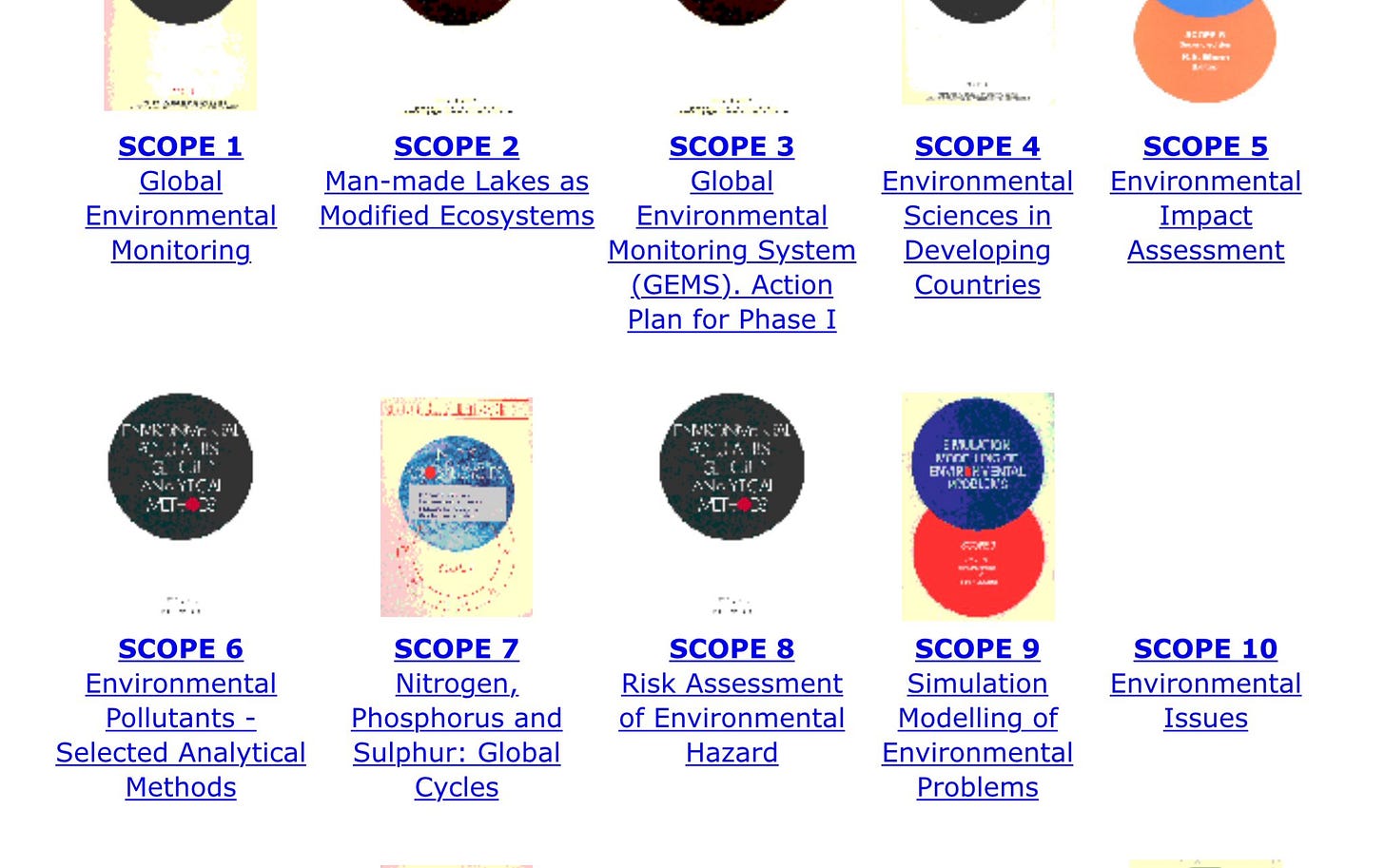






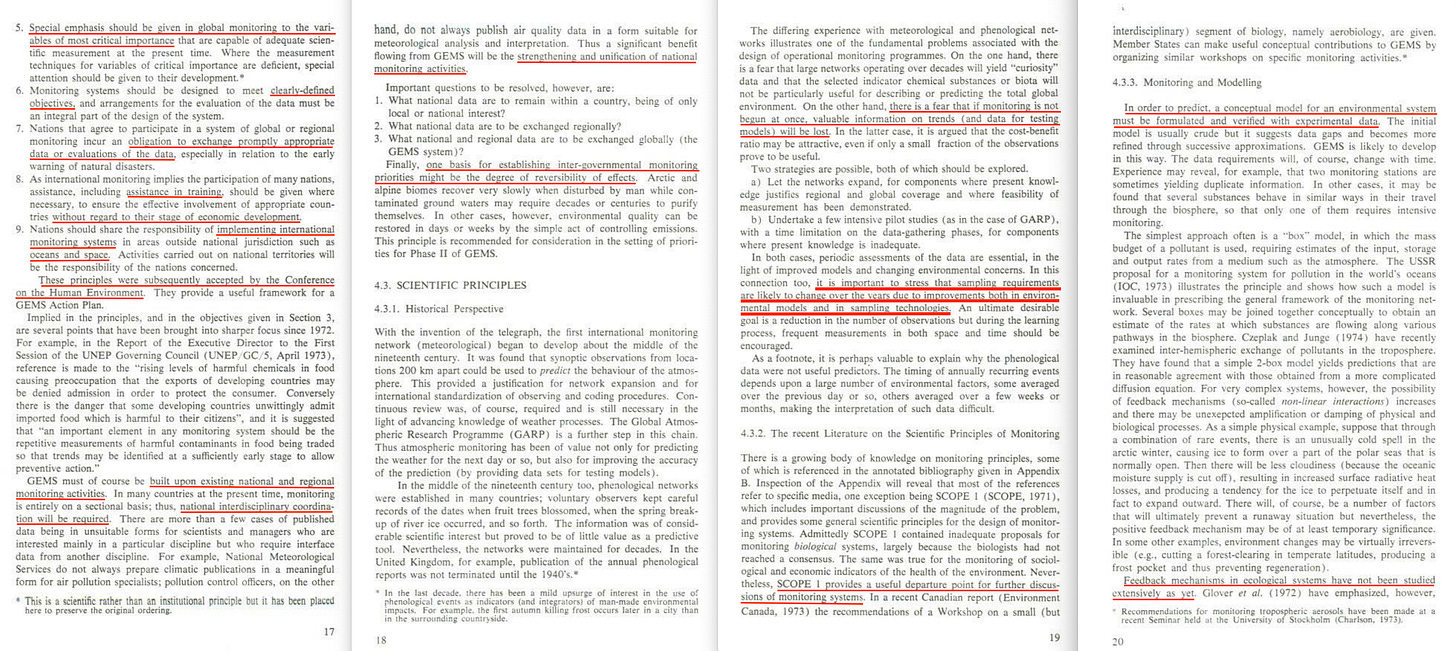

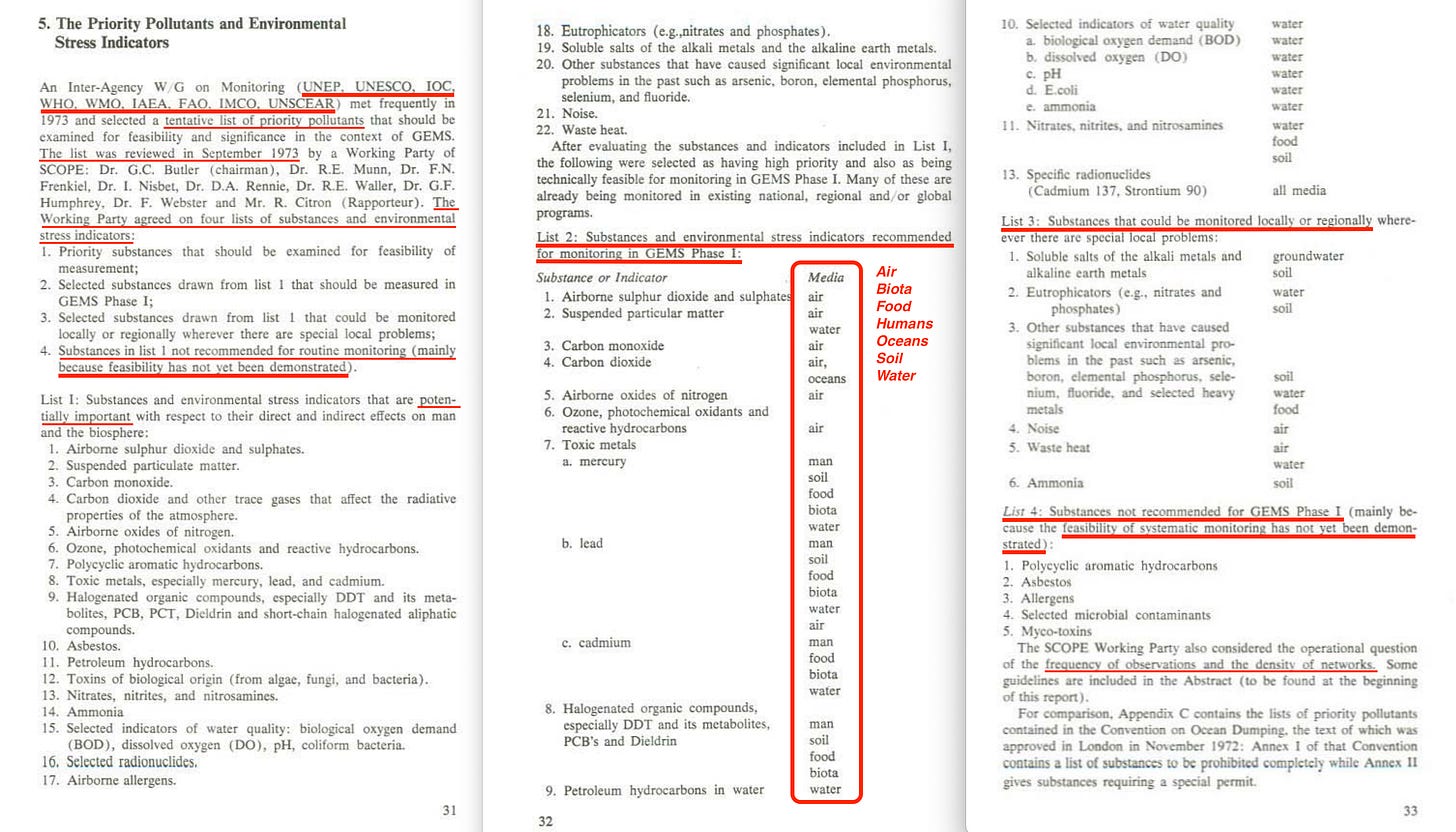
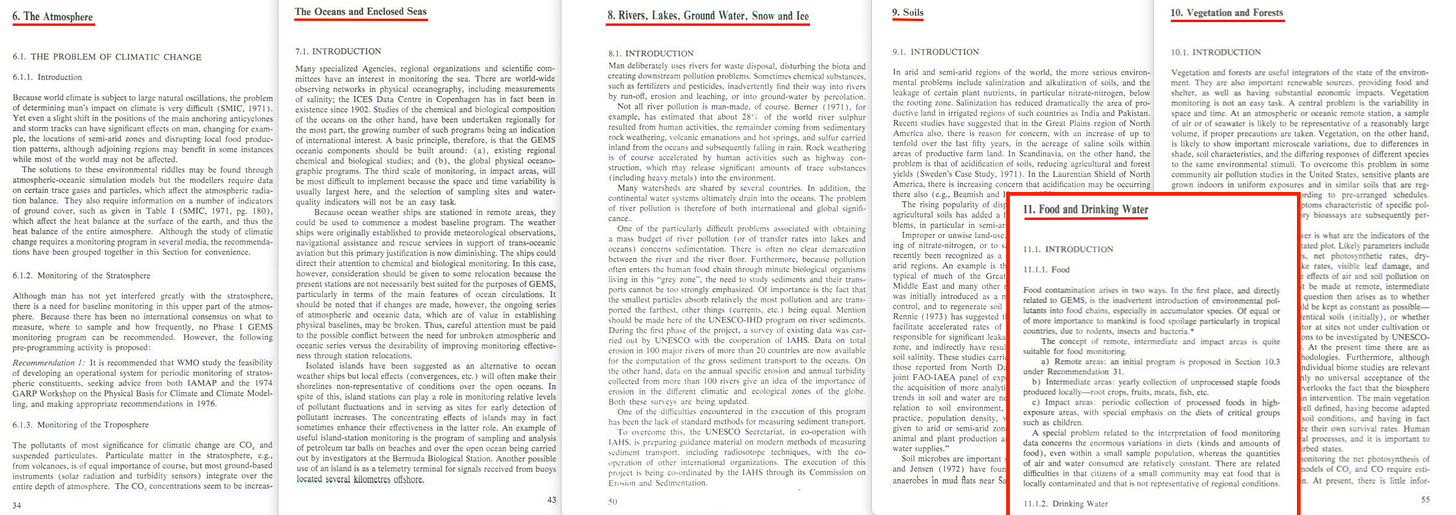






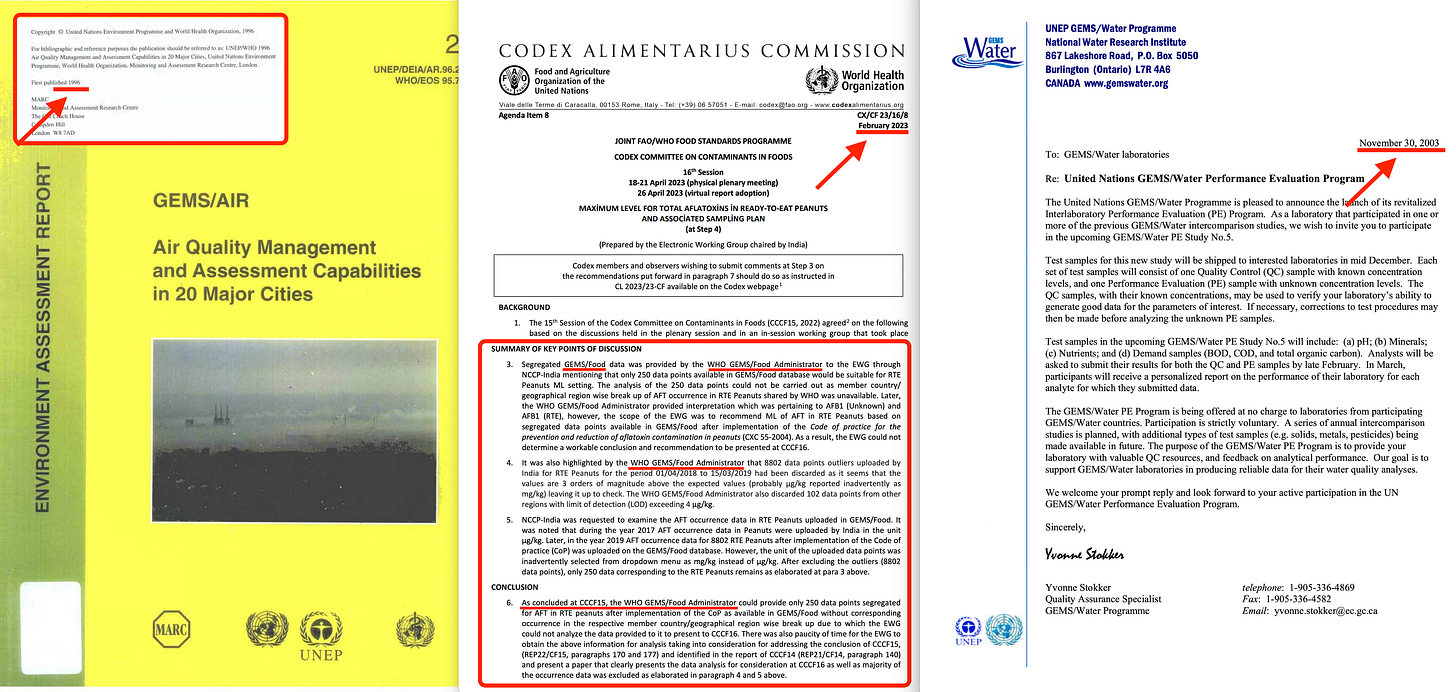



Excellent research!
I think the most pernicious aspects highlighted in your essays is the steady drumbeat with which these initiatives have operated and developed over time. It's also impossible to get one's 'head around' the macro whole encompassing view without dedicating an enormous amount of time to the subject.
As someone who used to research similar topics and work in the general sector of international development (we gotta love those sexy buzzwords), it's quite overwhelming to see everything that's happened since the 2000s play out like it has, as hindsight reinterpreted through age and a better appreciation of reality gives way to insights previously unavailable. And this is both at the granular level (I used to enamoured with the topics of empowerment and participation, and if anything left the ID sector because of my disillusionment and inability to reconcile ethics and the modus operandi of those I worked for) and at the higher levels (the institutional professional managerial class, it's an ecosystem in its own right with its own hubris).
What I really wanted to say is whatever has been planned and is being enacted is inevitable, and it's not a question of being an optimist or pessimist or doomer (we should all be optimists by default). Unfortunately though, with hindsight, one of the lessons from 2020-2022 is this inevitability. Personally I keep going back to Huxley's BNW in the sense the only choice really available going forward will be to stay within the system or step outside. Growing up in the 80s and 90s it was still possible to imagine a life of one foot inside and one outside, but the digitalization of everything renders this impossible. And so this unfortunately becomes the only real choice, with some heavy costs either way.
The good news is, I think, the digital modern world will eventually eat itself out from the inside (it might take a few generations, although automated decision making looks intent to get us to the end asap). In the sense that if we study human behavior then we can appreciate that the vast majority of those involved in the processes you describe probably really do have people involved with good intentions and who are decent: they simply lack self critical awareness and a honest ethical dimension coherently rooted in spirituality (which the vast majority of people lack, both because of the inherent flaws of and failure of religion). The other good news is that this reality really is an illusion and our experience of it is a necessary process part of a larger cosmic play. If we understand this, or at least, orient our lives in this direction, then outcomes in this reality are meaningless in the larger scheme and what matters is our individual ethical dimension. Obviously, behind the scenes pulling the strings there are a plethora of powerful individuals, families, groups, psychopaths, all jostling to be king of the hill, but this is another discussion entirely.
I don't remember if it was Land or someone else in the accelerationist orbit who said so, even though it surely was theorized earlier, but all these systems really do have a life and consciousness of their own, akin to egregores. So the best outcome to be hoped for is like Icarus or the tower of babel.
In the meantime, this (unnecessarily) complicated totalizing emergent system, where everything we do (and think) is transformed into data and we get [bitch] slapped for not being aligned (it'll be incredibly ironic if something like the blade runners "baseline" tests ever get created), that's what's coming. And it's inevitable.
Your research is awesome. It's mind boggling to see the comprehensive manner the interlocking "systems" were conceptualized in the 60s and 70s. And it's incredible the way none of this is actually known or discussed in public spaces. Which is why I think it's foolhardy to be anything except an observer. Even if essays like yours permeated the general thinking of the masses, which would in itself require a revolution in the media landscape, it's impossible for a single country to escape or step away from this interlinked global system (ironitmaybe smaller countries poor in all indicators and resources would be advantaged in the fight to be left alone).